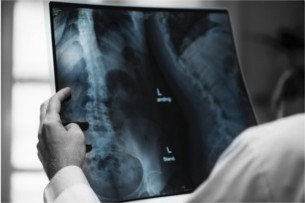MyChart ≠ Your Medical Record

Many people who call my office looking for assistance figuring out if they have a medical malpractice claim tell me they have their medical records. But usually, they do not; they have access only to their “MyChart.” MyChart, MyUHCare, My whatever-you-want-to-name-it are really good for some things and are a huge improvement over not having this service, but, they are not your medical record.
One of the first steps in building a medical malpractice suit is reviewing a patient’s medical record in order to reconstruct what happened and pinpoint exactly when, where, and how the medical error took place. Unfortunately, hospitals and other medical facilities can sometimes make it difficult for patients to access these records, instead preferring to give people access to online portals, such as MyChart, that provide a much less detailed overview of treatment that was administered. While these portals allow patients access to some of their data, it is important to remember that this data is only a very small fraction of the information contained in an actual medical record.
What Information is in MyChart?
MyChart and other patient-focused portals were designed and are used to provide secure online access to portions of your medical record. They allow you, the patient, to securely use the internet to manage and receive information about your health. You can do things like:
- View lab and x-ray results;
- Make, cancel, change or view appointments with your doctor;
- Request prescription renewals;
- Send a message to your doctor (but speaking from experience, there is NO guarantee the doctor will actually see your message);
- Sync records to a 3rd party application;
- Share your record with other providers in the same health system;
- And the all-important pay your bill (and a whole host of other financially important things to the hospital like: setting up a payment plan; sending customer service messages about your bill; setting up a system to receive alerts on your phone when your bill is due; etc.)
While all of these items are important to you, they do not constitute your medical record. They simply help you and the healthcare provider manage your healthcare service.
What Information is in My Medical Record?
A medical record, on the other hand, contains complete details regarding a patient’s medical history, test results, treatment and medications, and other information that is essential in determining exactly where a medical error occurred. These records contain all of a patient’s medical information, not just the basic information available through patient portals such as MyChart.
Your Medical Record has items like:
- Physician and nursing progress notes;
- Physician consult notes;
- Actual X-rays, CT scans, MRIs images;
- Ancillary services records such as physical, occupational, and speech therapy notes;
- Consent forms;
- Hybrid records (electronic and handwritten documents);
- Medication administration records;
- Physician orders;
- Vital sign reports;
- Transfusion records;
- Operative reports;
- Anesthesia records and charts; and
- An audit trail that shows who accessed the records, when they accessed the records, and what entries they made in the records.
When entered correctly, these records allow doctors, nurses, and other healthcare professionals to communicate and collaborate regarding diagnosis and treatment. Your medical record contains all the information needed for your healthcare team to assist you in your medical care, yet they are not readily available for you to view.
You, the person the record is about, do not typically have the ability to see your complete medical record without submitting a written records request. And beware: You will have to jump through hoops and pay for access to the records.
Why Medical Records are Important for Building Your Medical Malpractice Case
While these records can be lengthy - oftentimes thousands of pages - an experienced malpractice lawyer can efficiently comb through them to determine exactly where and how the medical error took place. From your medical records, an experienced malpractice attorney will construct a chronology of critical events. This might seem basic, but your medical record is not typically organized in a manner that is useful for the reconstruction of events. Sometimes, changing the way we look at the services you received will help us determine when and where the medical error happened.
Unfortunately, doctors or nurses sometimes mistakenly input incorrect information into your medical record, leading to mistreatment and negligence. Examples of these input errors include incorrect patient allergy information, failure to list the correct patient medication upon discharge, copying and pasting old information that is no longer correct, and clicking on the wrong menu “drop down” in the electronic records. I’ve even seen one patient’s records accidentally imported into another patient’s chart! All these mistakes can lead to serious patient harm, including death.
The best way to find out what really happened to a patient is to begin with the patient’s actual medical records (both electronic and paper). MyChart and other online portals simply do not tell the real story. That is why it is so important for patients and their attorneys to get their hands on the actual medical records as quickly as possible.
How Do I Get My Medical Record?
Patients can request medical records from the health information services department of a hospital. Once requested, the medical facility has 30 days to release the records. Oftentimes, a medical facility will attempt to print the records, and if they charge per page, this can get very pricey, very quickly. It’s much better to request an electronic form of your records, which, in addition to being much cheaper, can make it much easier to share the records and to have an attorney review them thoroughly. The process can be tricky, and hospitals frequently claim they didn’t receive the request or that there was some other hoop the patient failed to go through in making the request. That is why the best course typically is to have an experienced medical negligence attorney work with you to request the records.
And here is a little extra information: In addition to your medical record, there are other items that might be helpful to your case, like GPS locators that track staff activity or data saved on certain machines in a hospital separate from the formal medical records. Knowing what to request and of whom is a key step in analyzing a medical malpractice claim.
If you are considering a lawsuit, it is important to get your medical records, not just access to your MyChart, and to contact a lawyer as soon as possible. If you or a loved one has been injured, and you are seeking representation, do not hesitate to reach out to our experienced team of Cleveland malpractice lawyers, so that you can receive the compensation you deserve and answers to what really happened to you in the hospital. To schedule your free consultation, call 216-287-0900 or contact us online today.




